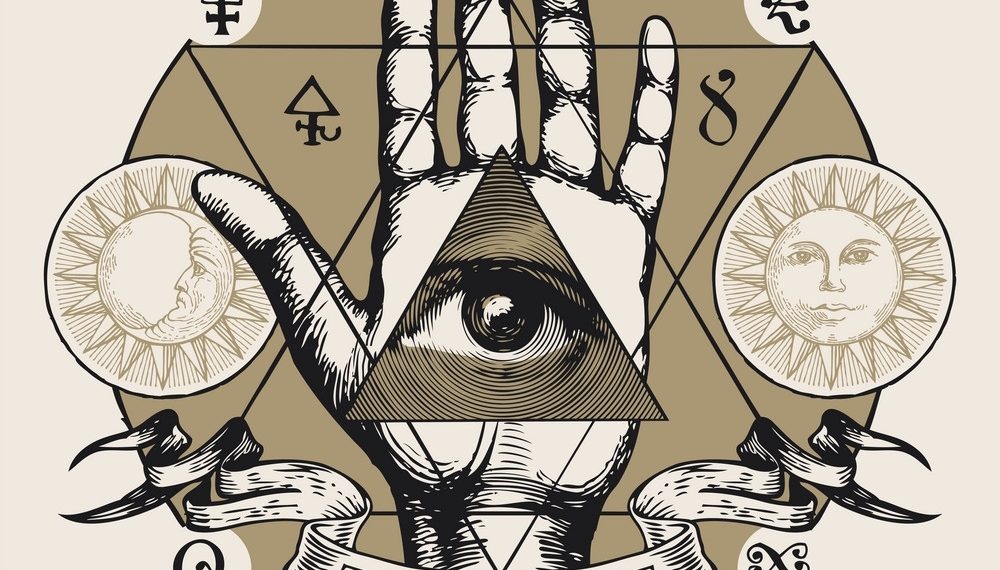It is the general Satanic perspective that gender equality is an essential part of their apocalyptic vision of utopia. In this future, absent of society, culture, and all of the expectations levied against all demographics as a necessary biproduct, everyone has the equal opportunity to fight for their right to live – women in particular, without whom the human race would not survive.
Major Satanic preliminaries have stepped forward to cite strong opinions on issues of interest to women.
The Marquis de Sade on Women
The Marquis de Sade was the first Satanic preliminary to do so, and his opinion was a remarkably favorable one for the time period. Raised in Revolutionary France and born a noble aristocrat, Sade nonetheless held a heartfelt sympathy for the plight of all disenfranchised groups.
“Never,” he proclaimed, “may an act of possession be exercised upon a free being; the exclusive possession of a woman is no less unjust than the possession of slaves; all men are born free, all have equal rights: never should we lose sight of those principles; according to which never may there be granted to one sex the legitimate right to lay monopolizing hands upon the other, and never may one of the sexes, or classes, arbitrarily possess the other.”
His novel Juliette, published between 1797-1801, was a sequel to the novelette Justine. Juliette, who grew up alongside her sister Justine in a convent, is seduced into amoralism at the age of thirteen. The novel follows her libertine life up to age thirty, in which she meets other like-minded criminals: Clairwil, whose passion is murdering young men, and Saint-Fond, a fifty-year-old millionaire who (on top of committing incest, murder, and the torture of young women) conspires to incite a famine that will wipe out half of France. Despite the wickedness and reckless abandon with which Juliette leads her life, she is granted the happy ending so cruelly denied her virtuous sibling.
An illustration from Sade’s Juliette
“Behold, my love, behold all that I simultaneously do: scandal, seduction, bad example, incest, adultery, sodomy! Oh, Satan! one and unique God of my soul, inspire thou in me something yet more, present further perversions to my smoking heart, and then shalt thou see how I shall plunge myself into them all!”
Juliette represents Sade’s perfect libertine woman. She embraces wickedness, is an insatiable lover, worships Satan, and her sole purpose in life is “to enjoy oneself at no matter whose expense.”
Sade’s general philosophy was laid out in two of his major works: La Philosophie dans le boudoir (in English: Philosophy in the Bedroom) and Les 120 Journées de Sodome (in English: The 120 Days of Sodom).
La Philosophie, written in 1795, was both a socio-political drama and a work of erotic fiction. In the introduction of his sordid tale, involving the deflowering and corruption of an innocent teenage girl and eventually culminating in the rape of her pious Christian mother, Sade offers a stirring appeal to his female readers in particular:
Lewd women, let the voluptuous Saint-Ange be your model; after her example, be heedless of all that contradicts pleasure’s divine laws, by which all her life she was enchained.
You young maidens, too long constrained by a fanciful Virtue’s absurd and dangerous bonds and by those of a disgusting religion, imitate the fiery Eugenie; be as quick as she is to destroy, to spurn all those ridiculous precepts inculcated in you by imbecile parents.
An illustration from Sade’s Philosophy in the Bedroom
Dolmance, the homosexual nobleman leading the tutelage of this maiden (and in many ways Sade’s author avatar), encourages her to discard confining societal expectations heaped upon her:
“Ah, Eugenie, have done with virtues! Among the sacrifices that can be made to those counterfeit divinities, is there one worth an instant of the pleasures one tastes in outraging them?”
For Eugenie, the maiden in question, her thorough deflowering – in stark contrast to other virginal heroines prominent in erotic fiction of the time – is a cause for joy. She proclaims:
“Here am I: at one stroke incestuous, adulteress, sodomite, and all that in a girl who only lost her maidenhead today! What progress, my friends… with what rapidity I advance along the thorny road of vice!”
As for the Madame de Saint-Ange, the older female libertine and accomplice to Eugenie’s corruption, she has radically liberal perspectives on marital fidelity:
“My libertinage in no wise affects my husband … my husband is no more sullied by my debauches than I might be by his. I might fuck with the whole wide world without wounding him in the slightest.”
The Mme is also of Eugenie’s opinion related to a woman’s right to pleasure:
“Woman’s destiny is to be wanton, like the bitch, the she-wolf; she must belong to all who claim her.”
As he stated in the introduction, it was Sade’s hope that female readers of La Philosophie would embrace the example set by his female characters therein and embrace their own agency, particularly within the sexual realm.
Les Journées, written between 1785-1789, was Sade’s self-appointed magnum opus. As he was writing it from Bastille, it is alleged he shouted from the window of his cell to the streets below, inciting a small riot. Two days later, he was transferred to the insane asylum at Charenton. In the process, he lost his original manuscript of Les Journées. The more devastating blow came on July 14th, when the storming of Bastille occurred. Had he bitten his tongue, he may have been among the escapees.
In it, four wealthy noble libertines steal away for four months to the inaccessible castle in Saint-Martin-de-Belleville, France, with a harem of 46 victims – mostly young male and female teenagers – where they engage four female brothel keepers to tell the stories of their lives and adventures. The stories they tell are the inspiration for tortures meted out upon the harem members, which grows in intensity with each passing day and eventually results in their slaughter. However, their torture is not always physical. Often the stories profile other extreme fetishes, including coprophilia, pedophilia, blasphemy against the Catholic church and mass group sex.
The stories are often the impetus for the primary characters to discuss their libertine philosophies. Among the topics explored include beauty:
“Beauty belongs to the sphere of the simple, the ordinary, whilst ugliness is something extraordinary, and there is no question but that every ardent imagination prefers in lubricity, the extraordinary to the commonplace.”
Pregnancy:
“Do not breed. Nothing gives less pleasure than childbearing. Pregnancies are damaging to health, spoil the figure, wither the charms, and it’s the cloud of uncertainty forever hanging over these events that darkens a husband’s mood.”
And even abortion:
“Dread not infanticide; the crime is imaginary: we are always mistress of what we carry in our womb, and we do no more harm in destroying this kind of matter than in evacuating another, by medicines, when we feel the need.”
These sentiments reflect those expressed by modern feminist critics, who are dissatisfied with the standard of beauty imposed upon them, are questioning the expectation that they occupy the traditional homekeeper role within their private lives, and are most assuredly pro-choice.
Simone de Beauvoir, a prominent French feminist literary critique, published her essay Must We Burn Sade? in the 1951 issue of Les tempes modernes. The answer is, ultimately, no. Beauvoir finds useful wisdom in Sade’s libertine approach to philosophy: “Not only does Sade … anticipate what has been called the ‘pansexuality’ of Freud, but also he makes eroticism the mainspring of human behaviour. In addition, he asserts that sexuality is charged with a significance that goes beyond it. Libido is everywhere, and it is always far more than itself.” If ever there was a feminist stamp of approval, it would seem Sade has earned it.
Anton Szandor LaVey on Women
Anton Szandor Lavey first published The Satanic Witch (originally The Compleat Witch) in 1971. This work was written in particular for his female followers.
Though The Satanic Witch reaffirms many standards modern feminists reject, like the obligation of women to tailor their appearance to suit the attraction (or repellant) of men, it insists these are strengths a savvy witch can exploit to better manipulate her ends. This is, in fact, the intention of the entire book.
“NEVER FORGET THAT YOU ARE A WOMAN, AND THE GREATEST POWERS YOU CAN EMPLOY AS A WITCH ARE TOTALLY DEPENDENT UPON YOUR OWN SELF-REALIZATION THAT IN BEING A WOMAN YOU ARE DIFFERENT FROM A MAN AND THAT VERY DIFFERENCE MUST BE EXPLOITED!”
To this end, LaVey provided his “Personality Synthesizer” for women to categorize themselves based on four archetypes he provided. These archetypes accompanied the four cardinal directions, which were juxtaposed on top of the numbers on a clock. Female witches were encouraged to discover their “type” by matching it to a number on the clock.
LaVey’s Personality Synthesizer
Although in this sense the Satanic Witch reads like a self-help book written by a man instructing women how to be sexy, LaVey clarifies that his intention is not to pick up men, “but to produce within yourself an accelerated charge of self-confidence.” Channeling Sade before him, LaVey was imploring women to take control of their sexual agency not just as a form of rebellion against conventional interpretations of virtue, but as an expression of herself as a metaphysical creation-being.
Despite LaVey’s lifelong insistence that there was a quantifiable difference between men and women that ran as deeply as his metaphysics, no doubt a holdover from the neo-pagan Wiccan tradition of revering the divine feminine and the divine masculine in separate components – the Triple Goddess and the Horned God – he did not allow this dissimilarity to impede women’s voice within his Church. His daughter, Zeena LaVey, was the public face of the Church as its High Priestess during the mid to late 80’s, and the succession of women in his life – Diane Hegarty and Blanche Barton – went on to occupy the seat as well. Female magi within the church today have the same opportunities afforded to them for upward advancement within the hierarchy as their male counterparts.
In The Secret Life of a Satanist: The Authorized Biography of Anton LaVey, written by Blanche Barton in 1990, LaVey remarks upon the heavy influence the women in his life had upon the publication of the Satanic Bible.
“The difference between Marilyn’s and Jayne’s approach to intellectual pursuits is that Marilyn carried big heavy books around and hung out with brainy people to absorb their intellect, while Jayne really had a thirst for knowledge. Jayne was very proud of the fact that if she like something enough she would commit it to memory. At that time, The Satanic Bible was still in monograph form, and Jayne had pored over those pages until she knew most of it by heart…Marilyn gave me a copy of Stendhal’s On Love, and I still have a copy of Walter Benton’s This is My Beloved, which we bought together on Sunset Boulevard. Marilyn turned me on to it—wanted me to read it and write something in it for her. I got as far as writing her name in it, but I ended up with the book. It meant a lot to me during a particularly dark period in my life after I left L.A. Jayne kept insisting I read The Story of O and I, Jan Cremer. She gave me a dog-eared copy of each. It seems a distinctly feminine trait to want to share books with people they care deeply about.”
The Satanic perspective on women is a favorable one; as Anton Long wrote in the Black Book of Satan, “Nothing is beautiful except man: but most beautiful of all is woman.”




